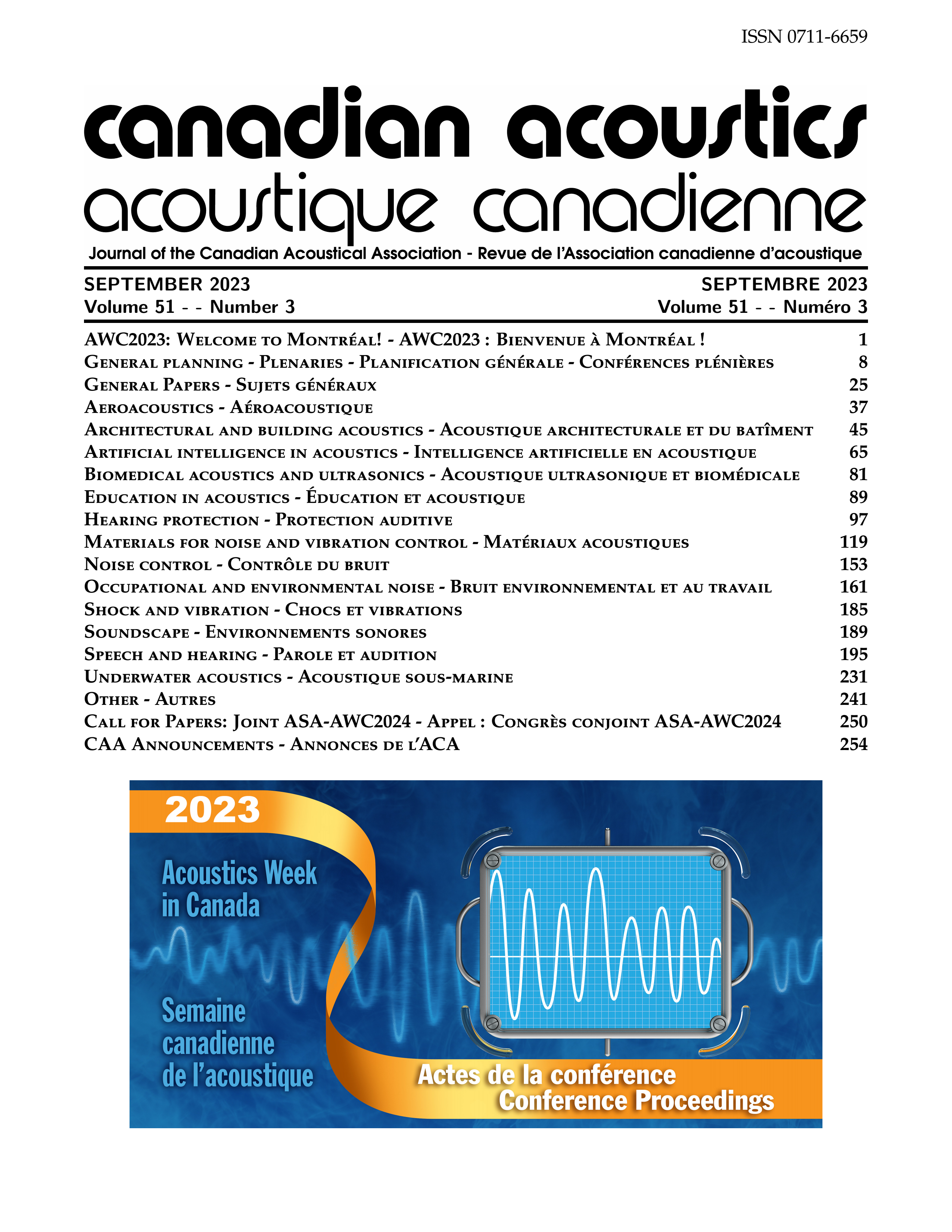Variation in Articulation Rate in New Brunswick French
Abstract
This study examines articulation rate (AR) in French spoken in five regions of New Brunswick. French is a minority language in this province, and the demographic concentrations of French speakers vary across regions, suggesting that the regions have different degrees of French–English contact. The main research question explored in this paper is how the different language contact situations are related to AR. Earlier research on contact varieties of various languages has shown that AR tends to be slower in regions where there are greater degrees of language contact ([1–4]). The present study also includes consideration of other factors that can affect AR variation: speaker gender and age, and length of inter-pause intervals (IPIs) ([5–7]).Speech data are from the RACAD speech corpus of New Brunswick Acadian French, originally designed for speech recognition applications. Analyzed in this study are two ‘calibration’ sentences that were read by all 136 participants. The sample size is well-balanced with a good distribution of gender and age for all five regions. Acoustic labeling – phones, syllables, pauses – was carried out with Praat ([8]). AR was calculated – locally per speaker – as the number of syllables in an IPI (and measured in syllables per second).Linear mixed-effects modeling shows that the region factor is not significant, that is, ARs did not differ across the different contact situations. This result is discussed in terms of earlier research on prosodic variation in contact varieties. Nevertheless, the effects of other factors are significant and are consistent with previous research. With respect to gender, males read the sentences faster than females. In the case of the age factor, AR decreased with speaker age. These findings contribute to a description of the temporal properties of contact varieties of Canadian French, an area that remains relatively under-documented.Additional Files
Published
How to Cite
Issue
Section
License
Author Licensing Addendum
This Licensing Addendum ("Addendum") is entered into between the undersigned Author(s) and Canadian Acoustics journal published by the Canadian Acoustical Association (hereinafter referred to as the "Publisher"). The Author(s) and the Publisher agree as follows:
-
Retained Rights: The Author(s) retain(s) the following rights:
- The right to reproduce, distribute, and publicly display the Work on the Author's personal website or the website of the Author's institution.
- The right to use the Work in the Author's teaching activities and presentations.
- The right to include the Work in a compilation for the Author's personal use, not for sale.
-
Grant of License: The Author(s) grant(s) to the Publisher a worldwide exclusive license to publish, reproduce, distribute, and display the Work in Canadian Acoustics and any other formats and media deemed appropriate by the Publisher.
-
Attribution: The Publisher agrees to include proper attribution to the Author(s) in all publications and reproductions of the Work.
-
No Conflict: This Addendum is intended to be in harmony with, and not in conflict with, the terms and conditions of the original agreement entered into between the Author(s) and the Publisher.
-
Copyright Clause: Copyright on articles is held by the Author(s). The corresponding Author has the right to grant on behalf of all Authors and does grant on behalf of all Authors, a worldwide exclusive license to the Publisher and its licensees in perpetuity, in all forms, formats, and media (whether known now or created in the future), including but not limited to the rights to publish, reproduce, distribute, display, store, translate, create adaptations, reprints, include within collections, and create summaries, extracts, and/or abstracts of the Contribution.


